How to Build a Kick-Ass MAME Arcade Cabinet from an Old PC
Part 3: Controllers
Finally, we get to the fun part. Fun for some, anyway, although if you’re not the type who gets a perverse glee from designing the perfect arcade control setup, this project just might not be for you. Like the other decisions so far, designing your controls is all about what kind of experience you want your MAME cabinet to provide. Below, we’ll discuss the pieces of control equipment you’ll need to consider.
But first, a word about microswitches . A microswitch is pretty much what it sounds like: a tiny little switch, designed to be both responsive and durable enough for extended arcade use. When you press an arcade button, you’re actually just pushing down on a plastic plunger which itself presses a microswitch. When you move a standard arcade joystick, you’re actually just using a little metal stick to press one of four microswitches.
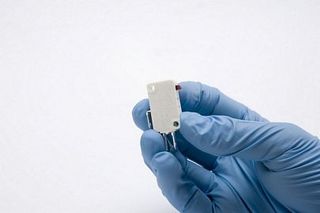
Joysticks
Probably the most recognizable symbol of arcade gaming, the joystick is the primary method of input for most games. And although picking a joystick might seem simple at first, there are actually a lot of factors you have to consider.
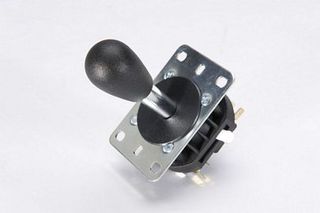
First, you need to decide whether you want to go with a 4-way or 8-way joystick. Either joystick will have 4 microswitches located at the base of the stick, which are pressed when the joystick’s shaft moves in a certain direction. In an 8-way joystick, moving the stick diagonally presses two buttons at once. In a 4-way stick, this is prevented from happening, usually with some sort of restrictor plate. For most games, you want an 8-way joystick so you can do things like move diagonally. However, several classic older games such as Pac-Man, Donkey Kong and Dig-Dug can’t handle diagonal inputs, and therefore need a 4-way joystick.
Image Credit: Happ Controls
Some people choose to install a single, dedicated 4-way joystick somewhere on their control panel, since most 4-way only games are only played by one person at a time. You can also use a joystick that can switch between 4- and 8-way, which is what we chose for our machine. Some of these joysticks have a switch on the underside, which you can use to change them, but we ended up going with the Mag-Stik Plus, a 4-way/8-way switchable joystick that can be switched from the top of the panel. You just pull up on the stick and turn it to switch between the modes. The Mag-Stik Plus is sold by Ultimarc , who sell high-end parts for home-made arcade machines. Because they were kind enough to send over 4 Mag-Stick Plus joysticks, we went with them for all of our control panels.
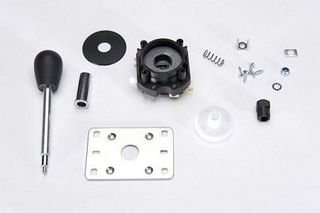
In addition to 4-way or 8-way, you have to consider the “style” of the joystick. Japanese style joysticks tend to have a ball top, light action and more play. American style joysticks tend to have bat-shaped tops, and tighter action. You can also consider restrictor plates, which limit the area in which the joystick can move, for instance to an octagon or smooth circle shape.
The biggest gaming news, reviews and hardware deals
Keep up to date with the most important stories and the best deals, as picked by the PC Gamer team.
Image Credit: Slagcoin
There are also joysticks with more specific functions, like 2-way, 49-way, analog, and rotary joysticks, but generally these are used by a very limited subset of games, so unless you’re dying to play a particular game that requires one of these unique joysticks, you’re probably better off investing in a high-quality 8-way or 8-way/4-way joystick.
Buttons
Fortunately, after the tricky world of joysticks, there’s really not that much to choose from with buttons. Your biggest decision will probably be whether you want the “classic” style of button, with a concave surface, or the “tournament” style button with a convex head. Most arcade games used the classic buttons, although modern Japanese fighting games frequently use the tournament buttons. To get the best of both worlds, we opted for classic buttons on the two facing control panels, and tournament buttons on the side-by-side panels.
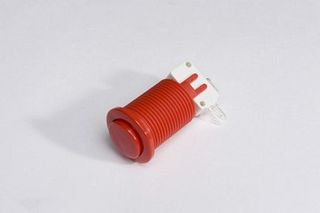
If you’re up for, you can also get translucent buttons, which can have an LED mounted inside for a light-up control panel. Since we wanted a subtle, classic look for our cabinet, we opted for no lights, and a single primary color for each of the control panels.
Trackballs and Spinners
After joysticks and buttons, which you’ll find on pretty much every MAME cabinet, the most popular controller inclusions are trackballs and spinners (also called dials). Although these controls are supported by far, far fewer games than joysticks, some of the games that do use them are such classics that many people choose to make room for one or both on their console. Games that use trackballs include Centipede , Marble Madness and Missile Command . A spinner is used with games such as Arkanoid , Pong and Tempest .
For our machine, to keep the control panels uncluttered and clean looking, we chose to go with a standard Street Fighter-style setup for all control panels, with 6 play buttons, a joystick and a start button (except for the two facing panels, which had both start buttons on the player one controller). In retrospect, however, there’s little need for more than 4 buttons on each of the facing panels. Generally speaking, the only games which require six or more buttons are fighters, which are played by only two players, and always side-by-side. Given that, it might be possible to fit a trackball or spinner on the narrow panels without overcrowding them.
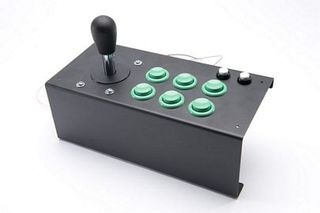
Most Popular


